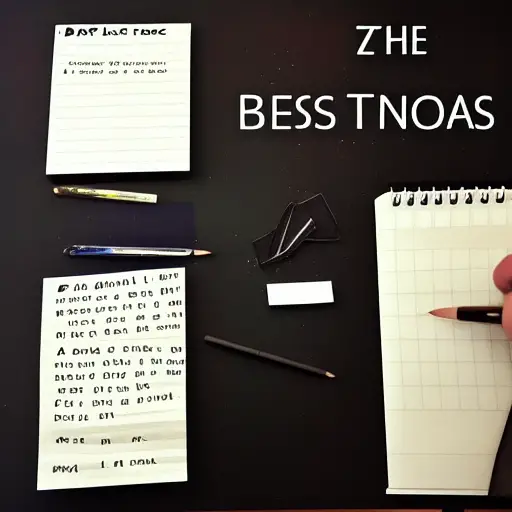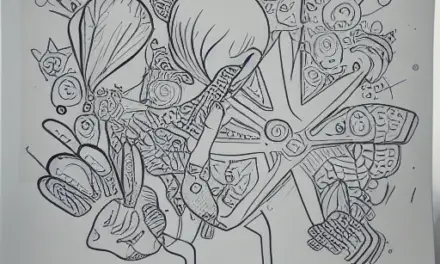There are many methods to organize your notes. Some use bullet points, some use a Table of contents, and some even use fonts and colors. The best way to organize your notes depends on what you are writing about. You may want to consider one or all of them, or a combination of both.
Bullet-point method
One of the most effective methods for organizing notes is through bullet points. This format allows you to quickly recall important information and action items. You can also easily see what needs to be done next. Here’s a step-by-step guide to using the bullet-point method to organize your notes.
Bullet points have a history dating back to publishing. Although they’re most commonly associated with digital notes, they have also been used in analog note-taking. Originally, bullets hung in the margins of a list, and now are most often used to separate larger blocks of text.
Another method involves creating collections of related information. This is often done by using an index. This method is great for those who want to take quick notes, and helps with defining the hierarchy of information. The index allows you to find related notes throughout your notebook. You can even use this method to keep track of upcoming events.
Another way to organize your notes is by using an outline. Using an outline will help you organize your information into a simple and easy-to-understand format. The key is to label the top portion of the page with the main topic, then list related subtopics underneath. Then, draw boxes around the details to make it easier to review them later.
The bullet-point method is another great method for taking notes for work. It is helpful when you’re not sure what someone else is saying in a meeting, or if you’re taking notes for a co-worker who’s not present. It also allows you to see at a glance what was said. This method is often associated with school, but it is equally effective in a professional environment.
Table of contents
One of the best ways to organize your notes is to use a table of contents. A table of contents helps you locate information easily, particularly if the notes you have are long or complex. It also allows you to see the big picture and get an overview of what you have stored.
Creating a table of contents is simple. You can use Word to do this. Use anchor links at important sections and create subheads at the beginning of your document. You can even create a table of contents using a cloud-based approach or offline methods. Once you have your table of contents, you can begin preparing your notes.
A meeting notebook is a great tool for taking notes during a meeting or brainstorming session. Designate the notebook with a name like “Meeting Notebook.” This way, you can keep all of the materials you need for the meeting in one place. The notebook should also have a convenient Table of Contents.
In addition to having a table of contents, it is also important to label your notes. Use consistent fonts, themes, and colors. You should also use consistent naming conventions for all your documents. Putting important features in the same place will save you time and frustration when you need to look for them.
Colors
Colour-coding notes can be a highly effective way to make your notes easier to find later. Not only does it make it easier to read your notes, but you can also make important points stand out by using different colours for different sections of your notes. You can even use different colors for different parts of the notes – whether it is a list or a chart – to make the information easier to understand.
Using color-coded pens is also a great way to make it easier to find the information you need. For example, you might have one color for budget meetings and another for creative ideas. You can even assign a specific color to your emails – for example, green for emails that need to be read and purple for unread emails – so you can quickly determine which emails are important.
You can also use colored flags for reading assignments. In addition, you can use these to mark dates in your organizer. Another great way to organize your notes is to use colored highlighters. The highlighters are great for marking important dates and highlighting important notes. Once you get the hang of it, you’ll be able to find what you need faster.
Color-coding your notes can also improve your recollection. Using different colors for different parts of your notes will help you remember more of what you wrote. You can also use highlighters to highlight key words and phrases. But make sure not to confuse using highlighters with studying, as they can be mistaken for cheating. Remember to take your notes seriously and review them as soon as possible.
Fonts
If you use a word processing application such as Microsoft Word, you can change the font and style of the text in your notes. There are a few simple steps to change the font, style, and alignment of text in your documents. First, click in the text and choose Format > Text. Next, click the Fonts menu. In the Fonts window, select the font and style you want for the text. Change the font size, color, and style, as well as paragraph styles and title paragraph styles.
Choose a font and color scheme that will make it easy to locate important information. If you plan on using the documents for several days or weeks, it is best to use a font that is easy to read. Try to use language that you would understand six months from now, as well. Also, make sure that you include key information, such as the date, the main topic, page numbers, and any other pertinent information. This will save you time when you are looking for specific documents later.
Theme
Using a theme is a great way to simplify your work and create a clearer vision of the end result. Each group of notes should have a title with three or four words, and you can also create sub-headers and super-headers for each group. These elements can all be combined to create a more cohesive theme.













